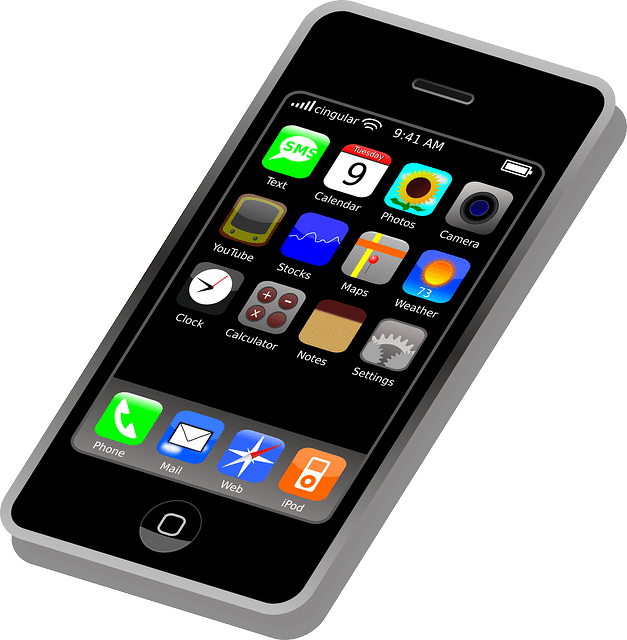WIRELESS NETWORKS COMMUNICATION
Mobile banking is a globally popular banking system which is also known as electronic banking. Most of the banks and financial institutions are giving a facility called SMS banking and in the last two decades, the number of mobile banking users has significantly increased.
All banking services and transactions can be done through this wireless application. This internet-based banking operation gives digital assistance to the customers and the service quality is very good and the total process is quicker than the practical process.
The main aim of this paper is to measure the adaptability of mobile banking by choosing an appropriate method for the consumer in the present days. In this study, mobile banking or electronic banking will be highlighted and the description of the followed methodologies will also be discussed.
The accurate comparison of the report results and the pros and cons of choosing the methodology will be considered in this research paper. Overall recommendations for improving the paper will also be provided in this study.
Mobile banking refers to the online banking system which can be used by smart phones, tablets and some electronic gadgets.
This system has been introduced by the financial institutions and banks for monitoring individual accounts, financial transactions.
This electronic banking is depending on internet availability and data connectivity and wireless application with specific software this mobile banking has developed and the total system also depends on the telecommunication authority.
The adaptation of the new system to the consumers is the main objective of the study and the perceptions of mobile banking will also be highlighted throughout the research paper.
Task technology fit and the customization of technology can influence the consumer’s adaptation regarding mobile banking services.
In this article, the advantages and disadvantages of the applied methodology will be discussed and a short brief of the comparison of report results will be discussed.
The main objective of the study is to measure the adaptability of mobile banking on the consumer in the present days. Internet and data connection services are massively increased for mobile usage which can boost the demand for electronic banking and its ubiquity and immediacy features.
Security and the risk factor have also come up with mobile banking and security is the most important concern of a consumer.
Cybercrime is a very common example of a scam that happens a lot with the consumers and people got very much affected by this. Account accessibility, electronic passbook generation, account statement, balance inquiry, branch locator and the used facility has provided by the bank which can be very helpful for a consumer while banking.
In this study, some recommendations are also provided for perfectly presenting the research paper.

3. Description of the methodologies used in the paper
In present days mobile banking service is provided by almost all the banks and financial institutions.
Different types of application are used for providing this facility to the consumers and different software are also used by the organizations. Mobility, usability, and availability are the main reason for using mobile banking.
As per Ghobakhloo and Fathi (2019), many theories and models are followed such as the technology acceptance model, innovation diffusion theory, etc. Technology perception can be changed and it can influence people for more usage and technology characteristics and initial performance expectancy effects on the application adaptation.
As an example, it can be said that the task technology fit model can refer the customer needs.
The model has four characteristics, such as task technology, technological fit, task characteristics and further usage. User adaptation for an individual directly depends on the task technology fit, performance and effort expectancy, social influence and facilitating conditions.
Moreover, the intention of a user towards a new technology adaptation depends on their behavioral change and trustworthiness of data reliability.
The population of mobile banking users is increasing day by day and it is proved by the unified theory of acceptance.
Moreover, it can be seen that the usage of information technology in the global business is continuously uprising and mobile banking is a part of this information technological upgrading.
As per Sharma and Sharma (2019), not only academic development, but it plays a significant role in practical life also. In current days all the banks and financial institutions are using an integrated model of task technology fit and Unified theory of acceptance and usage of technology for user adaptation.
The models also do the customization of technological adaptation daily and the desired routine task can be monitored with the help of these models and risk analysis, self-efficiency and performances can also be measured.
As per Abbas et al. (2018), depending upon every country and the location the adaptation acceptance percentage can vary. People from different areas have different perceptions of using the mobile banking facility and the banking software application.
Methodologies are implemented for the analysis of risk factors, adaptation, and positive experience calculation.
4. Comparison of the report results
Mobile banking is used by almost every country citizen since the year 2000 and there has found significant growth in user numbers. In this part of the research paper, different viewpoints of different authors will be discussed.
As per the viewpoint of Asongu and Odhiambo et al. (2019), the security and the risk factor of mobile banking is lesser than the practical paper banking. The accessibility of the account is very simple and it can be handled by anyone.
On the contradictory part, as per Baabdullah et al. (2019), the risk factor has increased due to mobile banking services.
As the mobile banking transaction held on an online platform it can affect the banking system. Cybercrime is a term which has come up very frequently and the consumers are the victim of this cybercrime. Internet hackers break the bank security system and collect the required data.
Personal details of the consumers can also be taken by hackers. As per Hong et al. (2019), the usability of mobile banking is way easier than the pen and paper-based system. The banking process is quicker and can be monitored from anywhere anytime.
However as argued by Kemal et al. (2019), the transaction can be done easily but it can be interrupted for the network connectivity issue.
5. Advantages/disadvantages/superiority of that papers methodology
A secondary data collection method has been followed by the researchers to research on the topic of mobile banking for constructing and properly clarifying the data.
Besides, as per Avornyo et al, (2019), the quantitative data analysis method is a suitable outcome of this research to imply a greater number of subjects with a sustainable accuracy and objectivity of the research.

Advantages
- The trustworthiness of the data in a reliable manner can be proceeding through the method of data collection for mobile banking purposes.
- Adapted questionnaires are helpful for the researcher to gather the data from the potential consumers of the bank daily.
- The s
- Sampling process of the methodology has a correct procurement to get the data from the users and non-users of the mobile banking process. This non-profitability sampling technique is really helpful for this research to make clustered groups for the research purpose via adaptation of individual thought.
- A thorough survey of the three major cities of Pakistan such as Lahore, Islamabad, and Karachi is advantageous for this research to acquire information about mobile banking by targeting a lot of people.
Disadvantages
- The reliability of the survey data may not be proper as a response is not truly feasible for the case of mobile banking use. All the population in Pakistan is not aware of the terms and conditions of mobile banking; hence, there is a problem incorrect provision of data.
- Collection of the superficial dataset without interviewing the internal members of the bank; therefore, a generalization of the study population or community is quite difficult.
- All the collected data are shown in the form of the numerical outbreak but no proper explanation has been given behind the facts.
- A major disadvantage of the quantitative data collection method in the case of the banking sector in Pakistan is not proper in terms of methodology as most of the data are elaborated through human perception.
Superiority
The superiority of research can be defined as the practice to randomize the controlled trial in the case to develop a proper research method.
For the purpose to develop the mobile banking scheme in Pakistan, the secondary data collection method is superior over the primary data collection method is not feasible.
Besides, the primary data collection process is quite time-consuming whereas the secondary data that are collected for research on mobile banking is less expensive in terms. Each step of the methodology is standardized in a manner to reduce the biases of the researchers with better provision of service.
On the other hand, elimination of the interview session is a good procession of this method to make the data valid, reliable and generalized for the larger population.
As per Chaouali and Souiden(2019), a clear provision of statistical, mathematical and numerical data cannot manipulate the terms and conditions of the research on mobile banking through the involvement of a huge number of populations.
Moreover, the casual competitiveness of this research has enhanced with a suitable survey method with the high provision of data delivery to provide moderate design for proper business decisions.
To improve the paper, there is a requirement of following some aspects which are as follows:
The mobile banking service is needed to be more simplified for every person starting from the young generation to the old generation. Mainly the persons above 55 years age needs to understand all the application of the mobile including money transfer, loan approval, and fixed deposit.
So the process must be easy and flexible for them to operate. In this article, there is a use of the TTF model which is responsible for adopting new technologies that help to make the process much simpler.
There is a need to improve the transaction process because the customer has to scroll all the transactions for finding a particular transaction.
There must be an application that can operate on the natural language that is operated by individual customers.
Analytics & Artificial Intelligence-driven banking
The banking sector needs to develop artificial intelligence on the application to remind the customer of bill payments, investment management, and credit management.
The improvement in this sector helps to attract the target customer to attach with the affiliated bank. This will improve the predictive analysis of the bank to offer its product and policies to the customer.
This will help to improve the overall risk factor regarding mobile banking in Pakistan.
Open Banking
The open banking helps the customers for effective transaction through different operations that need to be focused to survive in the global business market.
The open banking helps the customers for ease transactions and keeps the intact record of the previous transactions.
There is a need to improve the social influences that enhance the performance of mobile banking in all respect. This can encourage the security of each transaction in the proper gateway environment which can be facilitated by the customers.
Based on the previous study it can be seen that the infusing factor is generated by social influence. It directly depends on the country’s background basis and the poverty headcount ratio of a country.
Country income distribution level strongly affects the consumer approach and it can be seen through the behavioral, emotional changes of the consumer. User adaptation plays the most important role in the topic and it can increase the social influence as well.
Some advantages and disadvantages that can be seen in the user experience through mobile banking can be very helpful it also consists of some risk factors. Tasking and task establishing technology have to make a positive relationship with the user experience and user adoption.
Satisfied user and positive experience can promote the total concept and the technology that can surely influence more people to use mobile banking. In the case of task and technology formation, the orientation matters to the users for further usage of the application.
The performance of the application can help to make a good bonding with the consumer and people can easily adopt the concept.
Abbas, S.K., Hassan, H.A., Iftikhar, S. and Waris, A., 2018. Assimilation of TTF and UTAUT for Mobile Banking Usage. International Journal of Advanced Engineering, Management and Science (IJAEMS) Vol, 4.
Asongu, S.A. and Odhiambo, N.M., 2019. Mobile banking usage, quality of growth, inequality and poverty in developing countries. Information Development, 35(2), pp.303-318.
Avornyo, P., Fang, J., Antwi, C.O., Aboagye, M.O. and Boadi, E.A., 2019. Are customers still with us? The influence of optimum stimulation level and IT-specific traits on mobile banking discontinuous usage intentions. Journal of Retailing and Consumer Services, 47, pp.348-360.
Baabdullah, A.M., Alalwan, A.A., Rana, N.P., Kizgin, H. and Patil, P., 2019. Consumer use of mobile banking (M-Banking) in Saudi Arabia: towards an integrated model. International Journal of Information Management, 44, pp.38-52.
Basar, O.E., Alptekin, G., Volaka, H.C., Isbilen, M. and Incel, O.D., 2019. Resource Usage Analysis of a Mobile Banking Application using Sensor-and-Touchscreen-Based Continuous Authentication. Procedia Computer Science, 155, pp.185-192.
Chaouali, W. and Souiden, N., 2019. The role of cognitive age in explaining mobile banking resistance among elderly people. Journal of Retailing and Consumer Services, 50, pp.342-350.
Ghobakhloo, M. and Fathi, M., 2019. Modeling the Success of Application-Based Mobile Banking. Economies, 7(4), p.114.
Hong, I.B., 2019. Understanding and Predicting Behavioral Intention to Adopt Mobile Banking: The Korean Experience. Journal of Global Information Management (JGIM), 27(3), pp.182-202.
Kemal, A.A., 2019. Mobile banking in the government-to-person payment sector for financial inclusion in Pakistan. Information Technology for Development, 25(3), pp.475-502.
Maulana, C.Z., Suryana, Y., Kartini, D. and Febrian, E., 2019. Influencing Factors on the Actual Usage of Mobile Phone Banking in the Shari’ah Banks: A Survey in Palembang City, Indonesia. Global Review of Islamic Economics and Business, 7(1), pp.001-019.
Sharma, S.K. and Sharma, M., 2019. Examining the role of trust and quality dimensions in the actual usage of mobile banking services: an empirical investigation. International Journal of Information Management, 44, pp.65-75.


